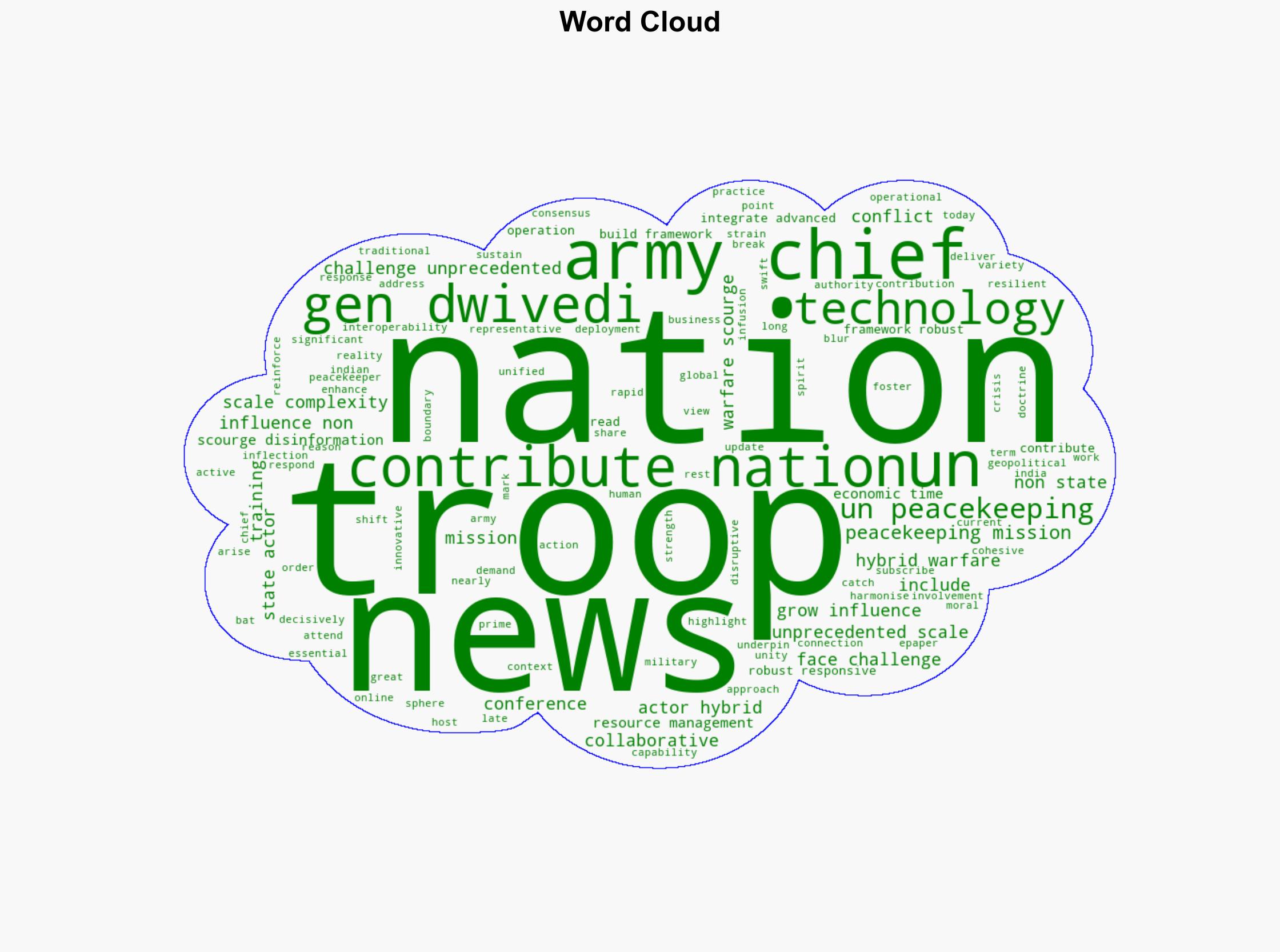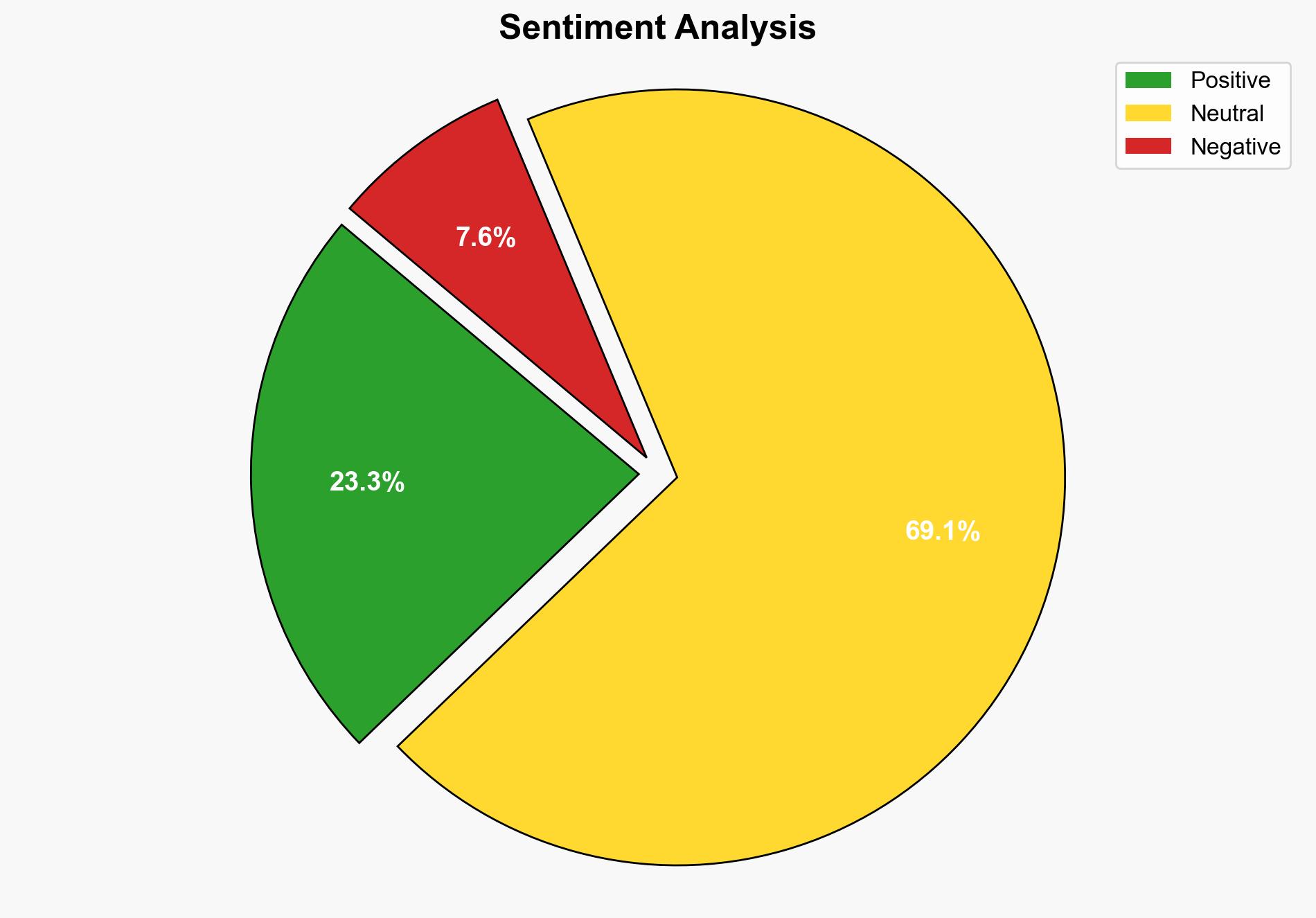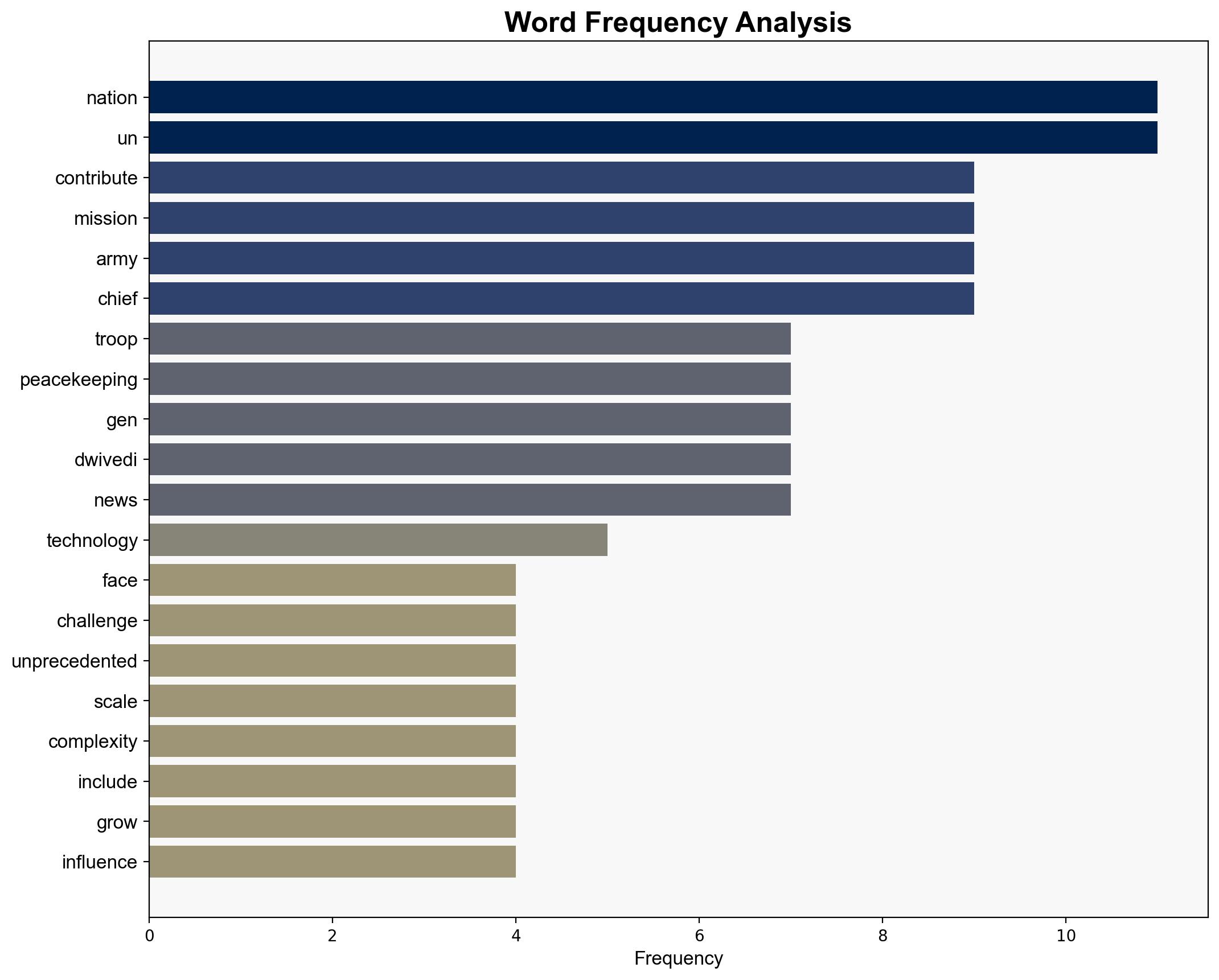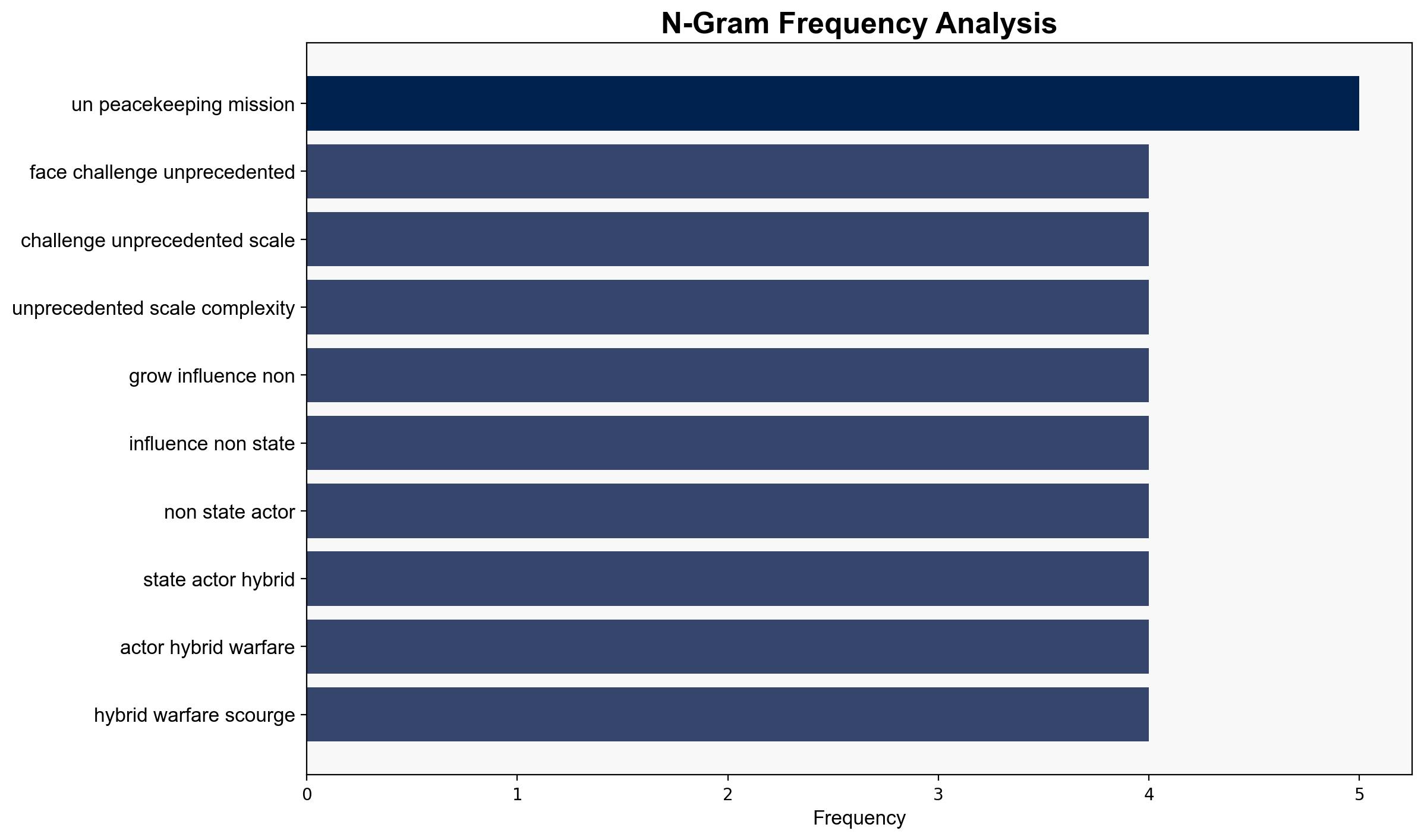Collaborative approach needed Army Chief Gen Upendra Dwivedi to nations contributing troops for UN peacekeeping missions – The Times of India
Published on: 2025-10-14
Intelligence Report: Collaborative approach needed Army Chief Gen Upendra Dwivedi to nations contributing troops for UN peacekeeping missions – The Times of India
1. BLUF (Bottom Line Up Front)
The most supported hypothesis is that a collaborative approach among nations contributing troops to UN peacekeeping missions is essential to address the increasing complexity and scale of global conflicts. This approach should integrate advanced technology and innovative resource management to enhance operational effectiveness. Confidence Level: Moderate. Recommended Action: Initiate multilateral dialogues to establish a framework for collaborative training and technology integration.
2. Competing Hypotheses
1. **Hypothesis A**: The primary challenge facing UN peacekeeping missions is the growing influence of non-state actors and hybrid warfare, necessitating a collaborative approach to integrate advanced technology and innovative resource management.
2. **Hypothesis B**: The main issue is the lack of consensus among contributing nations, which undermines the UN’s ability to respond effectively. The focus should be on diplomatic efforts to rebuild consensus rather than technological integration.
3. Key Assumptions and Red Flags
– **Assumptions**:
– Hypothesis A assumes that technology can significantly enhance peacekeeping capabilities.
– Hypothesis B assumes that diplomatic consensus is more critical than technological advancements.
– **Red Flags**:
– Lack of specific examples of successful technology integration in past missions.
– Potential overreliance on technology without addressing underlying geopolitical tensions.
4. Implications and Strategic Risks
– **Implications**:
– Successful integration of technology could set a precedent for future peacekeeping operations.
– Failure to achieve consensus could lead to fragmented efforts and reduced mission effectiveness.
– **Strategic Risks**:
– Technological advancements could be countered by adversaries, leading to an arms race in peacekeeping capabilities.
– Persistent lack of consensus could erode the UN’s credibility and moral authority.
5. Recommendations and Outlook
- **Mitigate Risks**: Establish a task force to evaluate and pilot advanced technologies in select missions.
- **Exploit Opportunities**: Facilitate workshops to share best practices and harmonize operational doctrines.
- **Scenario-Based Projections**:
– **Best Case**: Full integration of technology and consensus-building leads to enhanced mission success.
– **Worst Case**: Technological failures and diplomatic rifts result in mission setbacks.
– **Most Likely**: Gradual improvement in capabilities with ongoing diplomatic challenges.
6. Key Individuals and Entities
– Gen Upendra Dwivedi
– UN Peacekeeping Missions
– Nations contributing troops to UN missions
7. Thematic Tags
national security threats, cybersecurity, counter-terrorism, regional focus




